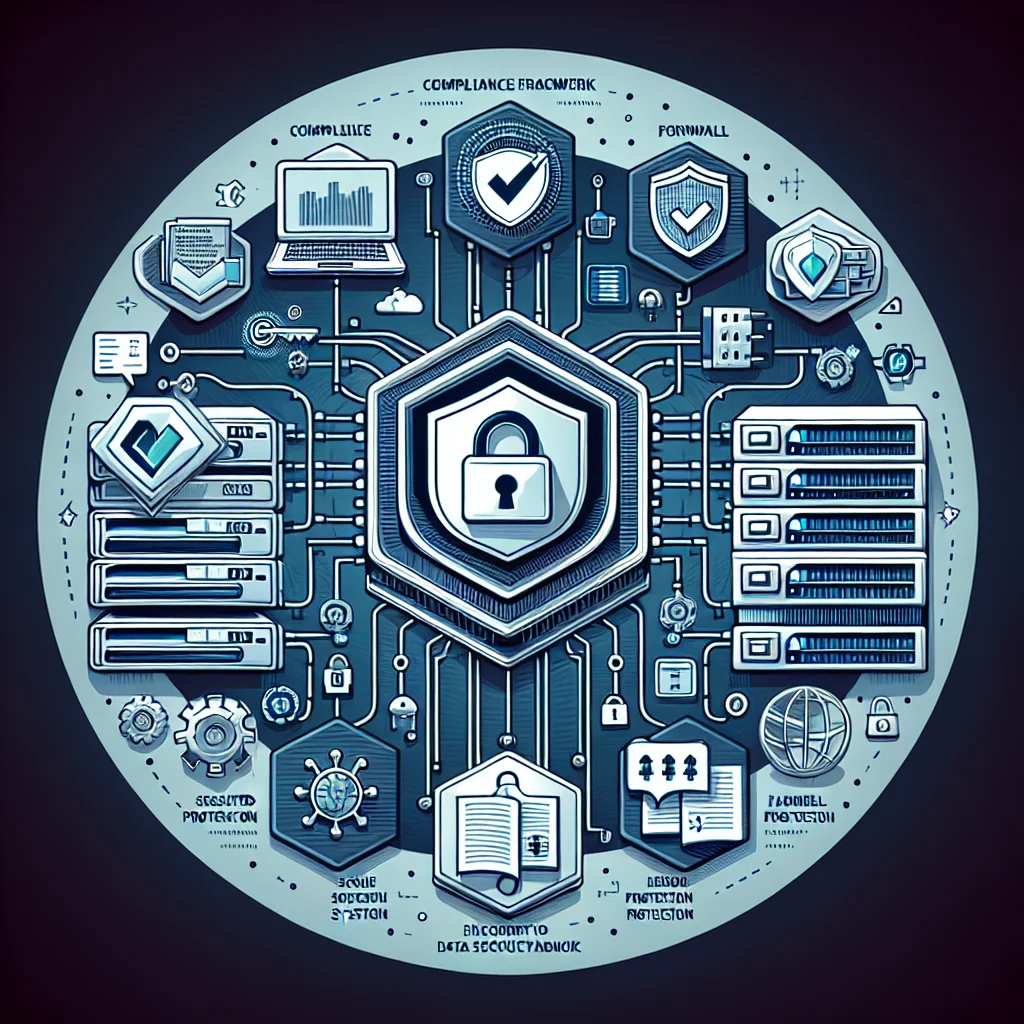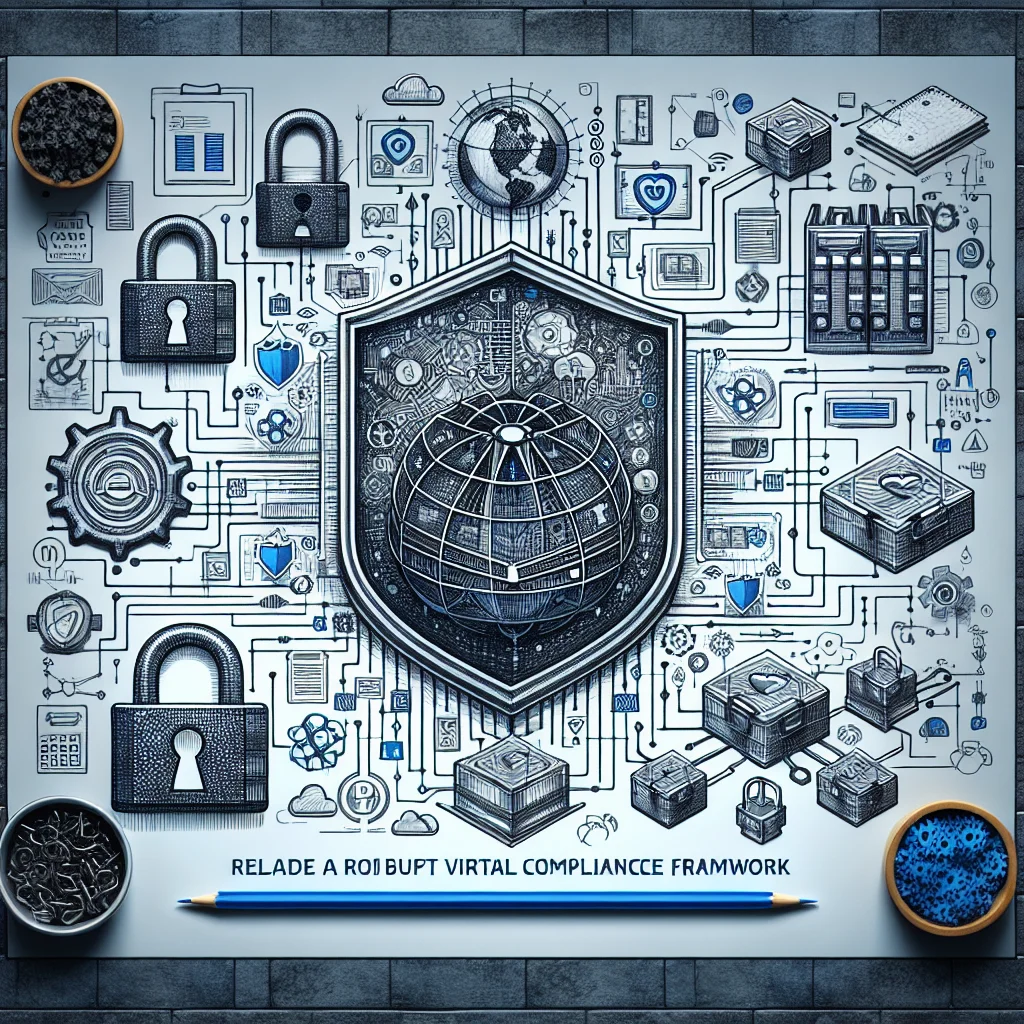In today’s digital landscape, cybersecurity and compliance are critical components of any business’s operational strategy. For organizations operating in the Middle East, adhering to the National Cybersecurity Authority’s Essential Cybersecurity Controls (NCA ECC) is paramount. This framework provides a comprehensive approach to safeguarding information assets, ensuring that businesses meet stringent security and compliance standards.
What is NCA ECC?
The National Cybersecurity Authority (NCA) of Saudi Arabia established the Essential Cybersecurity Controls (ECC) to create a robust cybersecurity framework tailored for the region. The ECC covers various aspects of information security, including governance, risk management, compliance, and technical controls. It aims to protect Saudi Arabia’s critical information infrastructure by setting clear guidelines and requirements for organizations to follow.
Who is NCA ECC for?
The NCA ECC is designed for all entities operating within Saudi Arabia, including government organizations, private sector companies, and non-governmental organizations (NGOs). It is particularly relevant for industries that handle sensitive data, such as finance, healthcare, energy, and telecommunications. CISOs, IT professionals, and compliance officers must understand and implement these controls to ensure their organizations remain compliant and secure.
Commonly Asked Questions by CISOs
1. What are the key components of the NCA ECC?
The NCA ECC comprises 114 controls divided into five main domains:
- Governance and Compliance: Focuses on establishing a robust cybersecurity governance framework, including policies, procedures, and compliance monitoring.
- Risk Management: Involves identifying, assessing, and mitigating cybersecurity risks to safeguard information assets.
- Information Security Management: Covers the implementation of technical controls to protect data and systems from unauthorized access and breaches.
- Security Operations: Deals with the operational aspects of cybersecurity, including incident response, monitoring, and continuous improvement.
- Physical and Environmental Security: Ensures that physical security measures are in place to protect information assets from environmental threats.
2. How does NCA ECC differ from other frameworks like ISO 27001?
While NCA ECC and ISO 27001 share similarities in their approach to information security, the NCA ECC is specifically tailored to address the unique cybersecurity challenges faced by organizations in Saudi Arabia. ISO 27001 is a globally recognized standard for information security management systems, providing a broad framework that can be applied to various industries and regions. In contrast, the NCA ECC includes specific controls and requirements relevant to the Middle East’s geopolitical and regulatory landscape.
3. What are the compliance requirements for NCA ECC?
Organizations must conduct a thorough assessment of their existing cybersecurity practices and identify any gaps or deficiencies compared to the NCA ECC controls. Once identified, these gaps must be addressed through the implementation of appropriate measures and controls. Regular audits and assessments are necessary to ensure ongoing compliance with the NCA ECC requirements.
4. Are there any Middle East-specific considerations when implementing NCA ECC?
Given the region’s unique geopolitical and regulatory environment, organizations must consider the following when implementing NCA ECC:
- Local Regulations: Ensure that compliance efforts align with local laws and regulations, which may include additional requirements beyond those specified in the NCA ECC.
- Cultural Sensitivities: Be mindful of cultural factors that may impact the implementation of cybersecurity controls, such as data privacy and employee awareness programs.
- Regional Threat Landscape: Stay informed about the specific cybersecurity threats and risks prevalent in the Middle East to tailor security measures accordingly.
5. What are the key benefits of adopting NCA ECC?
Implementing the NCA ECC offers numerous advantages for organizations striving to enhance their cybersecurity posture. Firstly, adherence to these controls helps establish a robust information security framework that mitigates risks and protects sensitive data. Secondly, compliance with the NCA ECC can enhance an organization’s reputation by demonstrating a commitment to security and regulatory compliance, thereby fostering trust among clients, partners, and stakeholders. Additionally, organizations that adopt the NCA ECC benefit from improved incident response capabilities, due to the structured approach to security operations outlined within the framework. Overall, adhering to the NCA ECC not only helps safeguard critical assets but also promotes a culture of security awareness throughout the entire organization.
6. How can organizations begin their journey to NCA ECC compliance?
To embark on the journey to achieve NCA ECC compliance, organizations should start with a comprehensive risk assessment to understand their current cybersecurity landscape and pinpoint areas requiring improvement. Following this assessment, organizations can develop a tailored implementation plan that aligns with the specific controls and guidelines outlined in the NCA ECC. Training programs for staff and key stakeholders should also be established to raise awareness of cybersecurity practices and responsibilities. Furthermore, establishing a continuous monitoring process to ensure compliance and adapt to evolving threats will be crucial for maintaining an effective cybersecurity posture over time. By taking these initial steps, organizations can lay a solid foundation for effective cybersecurity management aligned with the NCA ECC.
7. What resources are available for organizations seeking assistance with NCA ECC implementation?
Numerous resources are available for organizations looking to implement the NCA ECC, including official guidance documents from the National Cybersecurity Authority (NCA), workshops and training sessions led by cybersecurity professionals, and consultancy services from firms specializing in compliance and cybersecurity. Engaging with industry forums and local cybersecurity communities can also provide valuable insights and shared experiences from peers navigating similar compliance challenges.
8. How do we measure the effectiveness of our NCA ECC compliance efforts?
To measure the effectiveness of NCA ECC compliance initiatives, organizations should establish key performance indicators (KPIs) that align with the framework’s controls and objectives. Regular internal audits, vulnerability assessments, and penetration tests can help identify areas of improvement and ensure that security measures are functioning as intended. Additionally, maintaining detailed documentation and reporting on compliance efforts can aid in evaluating progress and making necessary adjustments.
9. What role does employee training play in NCA ECC compliance?
Employee training is critical for successful NCA ECC compliance, as it fosters a culture of security awareness within the organization. By educating staff about potential cybersecurity threats, best practices, and their individual responsibilities, organizations can significantly reduce the likelihood of security breaches stemming from human error. Regular training sessions should be supplemented with updated materials to ensure all employees remain informed about the latest cybersecurity trends and protocols.
10. How often should organizations review and update their NCA ECC compliance strategies?
Organizations should regularly review and update their NCA ECC compliance strategies at least annually, or more frequently if there are significant changes in the business environment, regulatory updates, or the threat landscape. Continuous improvement is essential to maintaining compliance; therefore, organizations should incorporate lessons learned from audits, incident responses, and evolving cybersecurity practices to refine their strategies and ensure they remain effective and relevant.
11. What are the common challenges organizations face when implementing NCA ECC?
Organizations often encounter several challenges while implementing NCA ECC. These may include a lack of understanding of the requirements, insufficient resources, or inadequate knowledge about the regulatory landscape. Additionally, resistance to change from employees can hinder the adoption of new cybersecurity practices. Organizations may also struggle with integrating existing security measures with NCA ECC controls, leading to potential overlaps or gaps in their cybersecurity framework.
12. How can organizations ensure leadership support for NCA ECC compliance?
Gaining and maintaining leadership support for NCA ECC compliance is crucial for its success. Organizations can achieve this by clearly communicating the business value of compliance, including the benefits such as risk reduction, enhanced reputation, and potential cost savings from avoiding security incidents. Presenting a comprehensive risk assessment and compliance plan to leadership can help highlight the organization’s current vulnerabilities and demonstrate the importance of a proactive cybersecurity approach. Additionally, involving leaders in training sessions and updates on the organization’s cybersecurity posture can reinforce their commitment and support.
13. What documentation is necessary for NCA ECC compliance?
To achieve NCA ECC compliance, organizations should maintain detailed documentation that includes their cybersecurity policies, risk assessments, incident response plans, and training records. Additionally, documentation should cover the implementation processes of the NCA ECC controls, monitoring activities, and audit results. This documentation serves not only as a record of compliance efforts but also as a valuable resource for continuous improvement and future audits.
Common Controls Between Frameworks
Many controls outlined in the NCA ECC overlap with those in other widely recognized frameworks, such as ISO 27001 and PCI DSS. Below are some common controls and their corresponding clause numbers:
ISO 27001 and NCA ECC
- A.5.1.1 (ISO 27001) / 1.1 (NCA ECC): Information security policies – Establish and maintain an information security policy.
- A.6.1.2 (ISO 27001) / 2.2 (NCA ECC): Information security organization – Define and allocate information security responsibilities.
- A.9.1.1 (ISO 27001) / 3.1 (NCA ECC): Access control policy – Develop and implement a policy governing access control.
- A.12.3.1 (ISO 27001) / 4.4 (NCA ECC): Backup – Ensure backup copies of essential information and software are maintained.
PCI DSS and NCA ECC
- Requirement 1 (PCI DSS) / 2.3 (NCA ECC): Install and maintain a firewall configuration to protect cardholder data.
- Requirement 3 (PCI DSS) / 3.2 (NCA ECC): Protect stored cardholder data through encryption and other methods.
- Requirement 5 (PCI DSS) / 4.6 (NCA ECC): Use and regularly update antivirus software.
- Requirement 10 (PCI DSS) / 5.2 (NCA ECC): Track and monitor access to network resources and cardholder data.
The Role of Automated Compliance Platforms
Implementing and maintaining compliance with frameworks like NCA ECC can be complex and time-consuming. ComplyHawk is an automated compliance platforms which offers significant advantages for organizations looking to streamline their compliance efforts. These platforms provide:
- Real-time Monitoring: Continuously monitor compliance status and alert stakeholders to any deviations or non-compliance issues.
- Automated Reporting: Generate comprehensive reports that demonstrate compliance with NCA ECC controls, making audits more efficient and less burdensome.
- Centralized Management: Consolidate all compliance-related activities and documentation in one place, ensuring a unified approach to cybersecurity and compliance.
Conclusion
For businesses operating in the Middle East, adhering to the NCA ECC is crucial for maintaining robust cybersecurity practices and ensuring regulatory compliance. By understanding the key components of the NCA ECC, addressing Middle East-specific considerations, and leveraging automated compliance platforms, organizations can effectively safeguard their information assets and achieve long-term success.
Ready to enhance your organization’s cybersecurity posture? Discover how our automated compliance platform can simplify your compliance journey and ensure you meet NCA ECC requirements. Contact us today to learn more.



